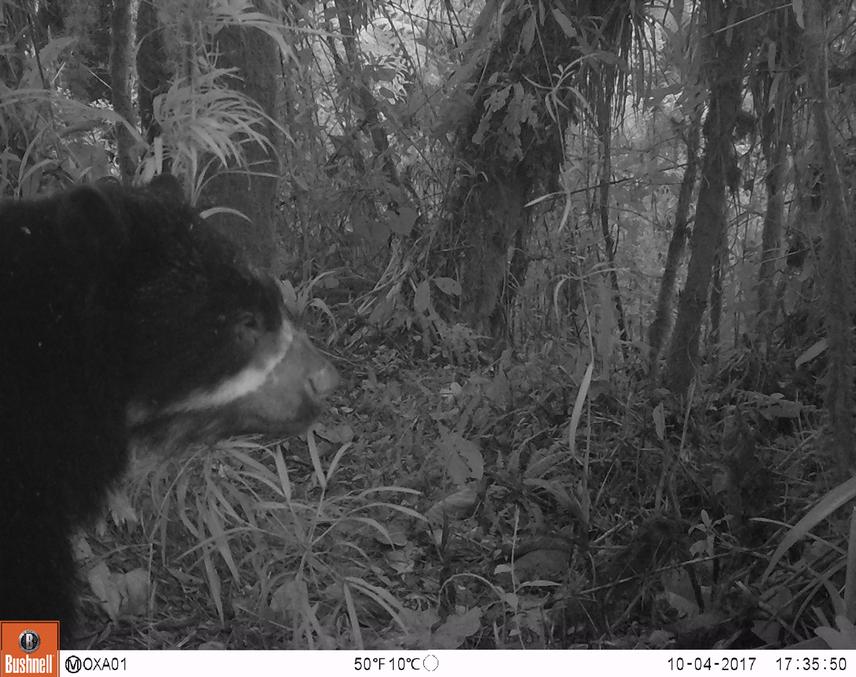Nereyda Falconí López
The research approach entails compiling existing Andean bear records, field data collection, and modeling. The study areas are located within the Andean bear’s potential distribution indicated by our analyses, such as the central region of the country. Then, I will confirm presence in these areas by data collection in field using direct and indirect records as well as camera traps, and apply spatial and landscape ecology methods to build information about the relationship between Andean bear presence and environmental, anthropogenic, and ecological characteristics.

Andean bear.
The Andean bear (Tremarctos ornatus) is an iconic species in the tropical Andes. Recent studies indicate that the majority of its range (~70%) is in Peru and Bolivia, but also indicated geographic areas where information on Andean bears is lacking (Wallace et al. 2014). Land use changes threaten Andean bear habitats (Peyton 1999), and since habitat loss is increasing it is imperative to establish measures to reduce and mitigate these effects, particularly given the Andean bear’s declining conservation status (Cardillo et al. 2004).
The National Plan for Andean Bear Conservation has been recently accepted by the Peruvian Forest and Wildlife Service (SERFOR 2016), and includes a list of desired actions. The plan prioritizes in situ research that informs management. In this way, the current proposal seeks to provide reliable information and contribute directly to this plan by updating and validating current distribution information.
The research approach entails compiling existing Andean bear records, field data collection, and modelling. The study areas are located within the Andean bear’s potential distribution indicated by our analyses, such as the central region of the country. Then, I will confirm presence in these areas by data collection in field using direct and indirect records as well as camera traps, and apply spatial and landscape ecology methods to build information about the relationship between Andean bear presence and environmental, anthropogenic, and ecological characteristics.
Information obtained from this study will contribute to the national plan for the conservation of spectacled bears being implemented by the Peruvian forest and wildlife service, with whom I will discuss alternative solutions to the increasing habitat loss driven by land-use changes.